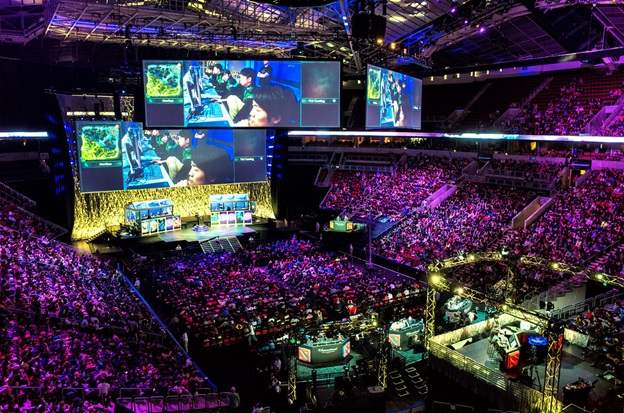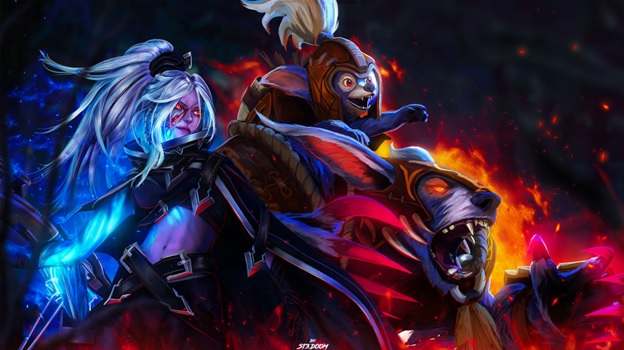Usually, casino entertainment was just restricted to classic casino games like baccarat, roulette, slots, poker, lottery games, and the like. Then came the fusion of sports betting into the online landscape. Now, it has become possible to bet on classic sports like football, tennis, basketball, horse racing, and so many others. To make things further interesting and engaging, esports betting was born. With this, it became possible to wager on possible games, making options like DOTA 2 betting available on online platforms.
Just like things gradually evolved in the virtual gambling scene, Dota 2, as we know it now, wasn’t born this way; it has evolved and experienced numerous ups and downs to make it a global phenomenon that we enjoy today. In the world of competitive gaming, you will agree that few events can capture the grandeur and excitement of The International in Dota. However, Rome was not built in one day. Similarly, the international Dota scene that we enjoy today went through different processes, which we will be exploring hereon. So, dig in!
The Roots of International Dota
Before entering the international scene, there was Defense of Ancients (DotA). It was a community-created mod for Warcraft III designed by a pseudonymous designer named “Eul” and later refined by “IceFrog.” This game became a household phenomenon in the gaming community and remains a foundation for the creation of numerous regional tournaments. It became so successful, and this was reflected by the growing interest in competitive multiplayer games. As a result of this achievement, a stage was set for the development of Dota 2.
In 2009, Valve Corporation acquired the rights to DotA. Before this, the company was famous for other successful games like Counter-Strike and Half-Life. Once they got their hands on the game, they decided to create a standalone sequel, Dota 2. By doing this, they aimed to build a robust competitive scene around it. They saw value in the flagship tournament and decided to create The International (TI). This tournament was aimed at showcasing the best teams globally, as well as elevating the eSports industry to greater heights.
The First International
The first International event took place in 2011. It was held at the Gamescom event in Cologne, Germany. This strategic decision to co-locate with a big gaming convention helped to generate huge interest and visibility in the game. Rather than rely solely on sponsorships or entry fees with its prize pool funding, Valve took an unconventional approach. They introduced a new funding mechanism system that included the sale of in-game items and compendiums (a digital booklet with various in-game rewards) to contribute to the prize pool.
As a result, the prize pool of $1.6 million for its first global tournament further intrigued people, drawing crowds and attention to the event along the line. This was because it was unprecedented for an eSports event at the time. Hereon, this model sets a new standard for funding eSports tournaments. These, coupled with community engagement and competitive stakes, continue to increase the prize pool to what we have today.
The setup of the first international included a group stage followed by the main event. Sixteen teams competed, and the top teams proceeded to the knockout stage. The tournament format was a mix of group-stage play and elimination rounds. This provided a comprehensive test of the skills and strategies of various teams. The tournament was indeed a significant test of Valve’s vision — to showcase the best talent in the game.
The tournament concluded with a dramatic finish. Na’Vi (Natus Vincere) emerged as the winner, defeating the Chinese team, EHOME. This win marked a significant moment for the European team and showcased that skills and strategy will be strong criteria for future champions. The successful event garnered global attention. Also, it set a precedent for future TIs.
Growth and Expansion
The success of the first event led to a significant increase in subsequent prize pools. To keep the global interest and awe, Valve continues to be innovative in its funding model. This led to the creation of “The Compendium” and, later on, “The Battle Pass.” Both funding models allowed fans to contribute to the prize pool directly. So, by the second International in 2012, the prize pool increased to over $2.8 million. Every year, the prize pool of TI continues to set new records.
The more TI grew, so did its complexity. The format of this tournament underwent numerous changes to accommodate the expanding number of teams, as well as improve the competitive experience. The addition of regional qualifiers allowed teams from around the globe to compete for a spot in the main event. As a result, the tournaments entailed a diverse and global representation of talented and skilled individuals.
Over the years, the competitive scene has shifted, with teams from various regions rising to fame. Some good examples are Evil Geniuses (EG), Invictus Gaming (iG), and Team Liquid. Each TI has produced memorable events that have become a part of eSports lore. From the dramatic comeback of Alliance in TI3 to the remarkable plays of OG in TI8&9, these moments have captivated audiences. Also, it solidifies TI’s status as a premier event.
The Impact of The International on the eSports Industry

The International has a major impact on the eSports industry. This stems from its innovative funding global reach and high production values, amongst others. Hence, the success of this tournament continues to demonstrate the viability of eSports as a major entertainment industry. The following are ways TI has helped this industry attract sponsorships, media coverage, and even investments.
- The substantial prize pools of TI have helped to set the standards for other eSports tournaments, influencing how competitive gaming events are financed.
- TI’s growth is accompanied by a rise in global participation and viewership. It is streamed live on popular platforms like YouTube and Twitch, which attracts millions of viewers from all parts of the globe. As a result, this has led to an increase in media coverage and recognition of the industry.
- It plays a significant role in the development of eSports talents, providing a platform for players to showcase their skills. This has led to the establishment of professional teams and leagues.
As the industry continues to grow, innovation and sustainability remain crucial in shaping its direction. Since The International tournaments are well-versed in this, viewers can look forward to more global teams and audiences. All of these influences further solidify the position of International in Dota as the pinnacle of competitive gaming. Don’t you agree?
Celebrating the Best of Dota 2
The International has come a long way since its initial event in 2011. From its innovative funding model to its groundbreaking prize pool, TI has set numerous benchmarks in the eSports industry. Hence, it continues to be a beacon of competitive excellence in online gaming. TI is undoubtedly a cornerstone of the eSports industry, celebrating the vibrant community of online gaming.
